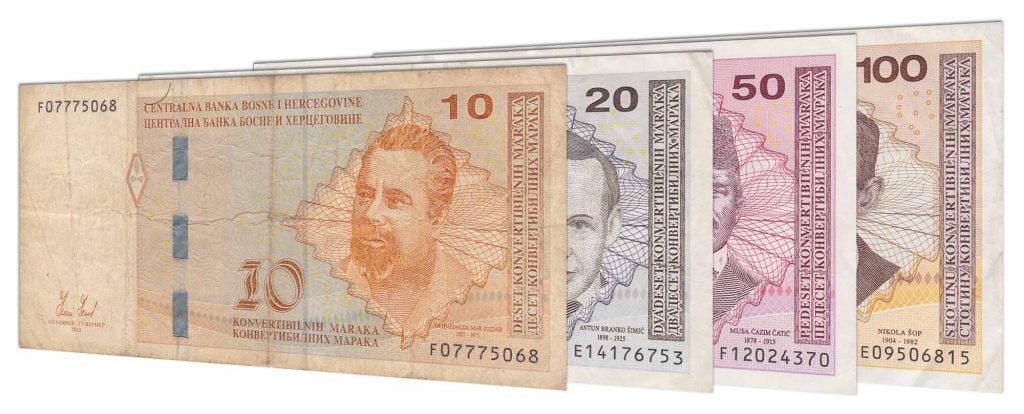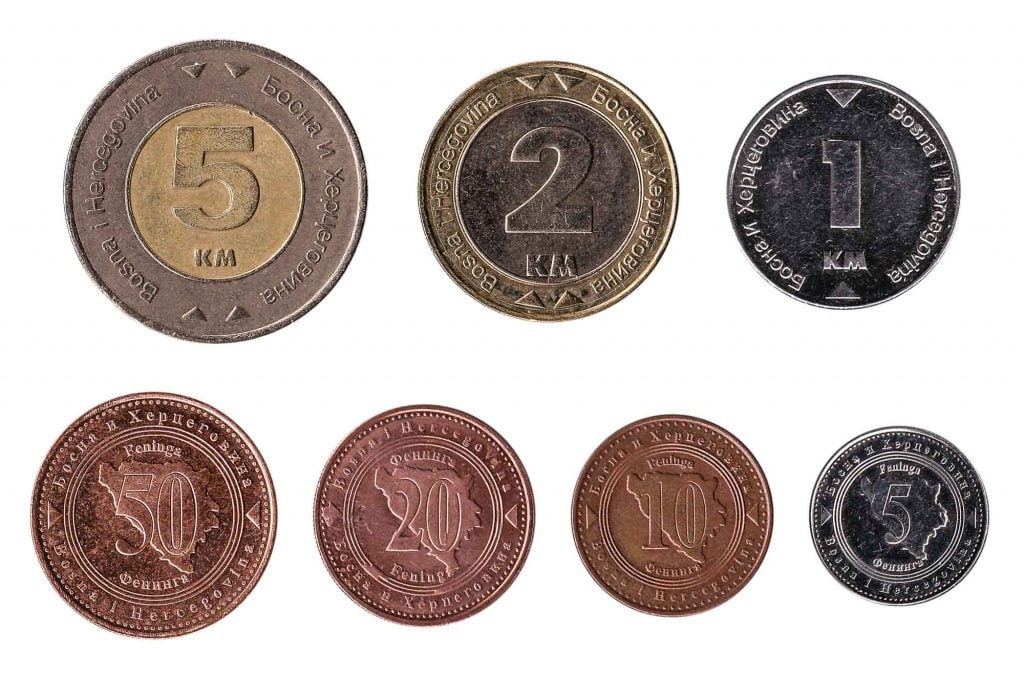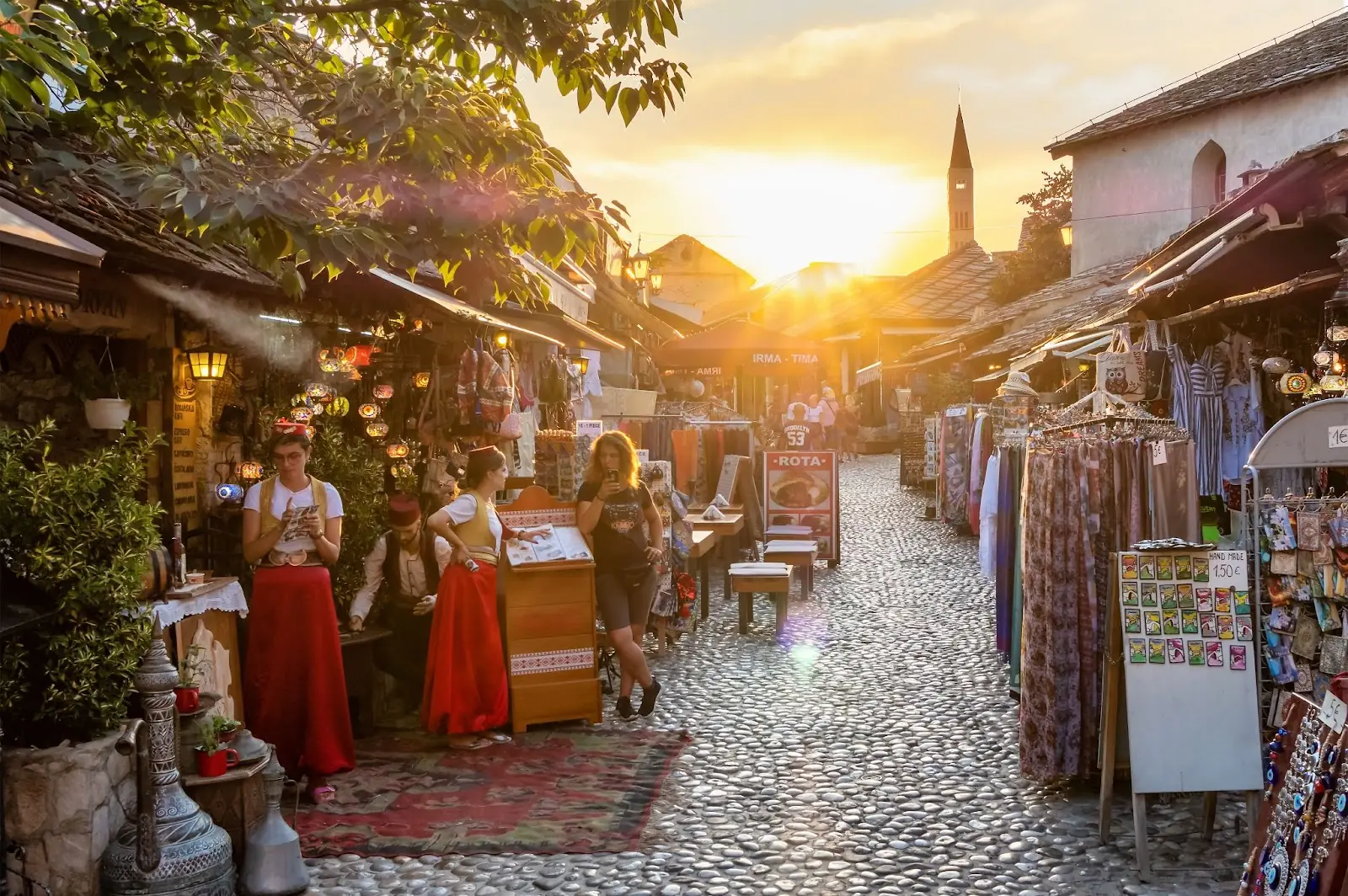
Bosnia currency: The convertible mark’s fascinating history
What is the currency in Bosnia?
The currency of Bosnia and Herzegovina is the Bosnian convertible mark, abbreviated as BAM.
Its symbol is “KM”, which stands for “konvertibilna marka”. The pronunciation is similar to the English word “convertible mark”.
Get the best rates with Manor FX
Exchanging pounds for Bosnian convertible marks in the UK can be tricky.
Not all local banks or exchanges offer Bosnia and Herzegovina currency.
Do you plan to travel to Bosnia and Herzegovina? Manor FX is here to assist! We provide the best online exchange rates for Bosnian currency in the UK.
Order Bosnian convertible marks easily through our website. Opt for speedy home delivery or pick-up in-store.
With our fast delivery and easy-to-use website, you’ll receive your convertible marks quickly and without hassle.
Buy your marks now
A brief history of Bosnia and Herzegovina currency
The history of currency in Bosnia and Herzegovina is quite interesting, reflecting the region’s complex history and political changes. Here’s an overview:
Ottoman era (15th century – 1878)
During Ottoman rule, various forms of currency circulated in Bosnia and Herzegovina. This includes gold and silver coins like the Ottoman Lira.
Austro-Hungarian period (1878 – 1918)
When the Austro-Hungarian Empire annexed Bosnia and Herzegovina, the Austro-Hungarian Krone became the official currency.
Kingdom of Yugoslavia (1918 – 1941)
After World War I, Bosnia and Herzegovina became part of the Kingdom of Serbs, Croats, and Slovenes (later Yugoslavia). The Yugoslav Dinar was introduced.
World War II (1941 – 1945)
During World War II, various currencies circulated, including the Independent State of Croatia Kuna, in areas under Croatian control.
Socialist Yugoslavia (1945 – 1992)
After the war, Bosnia and Herzegovina rejoined Yugoslavia, and the Yugoslav Dinar was reinstated.
Bosnian war and early Independence (1992 – 1998)
The early years of independence after the breakup of Yugoslavia were marked by economic turmoil. Initially, the Yugoslav Dinar was used, but hyperinflation meant that it was soon replaced.
The Bosnian Dinar was introduced in 1992. The Croatian Kuna and Serbian Dinar followed in respective areas of influence.
Introduction of the convertible mark (1998 – present)
The Dayton Agreement in 1995 introduced the Bosnian convertible mark (BAM) as legal tender in Bosnia in 1998. Designed to replace the multiple currencies circulating in the region.
The “KM” (short for “konvertibilna marka”) was pegged to the German mark initially. Later, it was pegged to the euro, providing much-needed stability to the country’s economy.
The convertible mark’s design reflects the diverse cultural and historical heritage of Bosnia and Herzegovina. Each banknote and coin often depicts important historical figures and landmarks, symbolising the country’s rich past and diverse culture.

Bosnian banknotes
the Bosnian convertible mark (BAM) has a range of visually distinctive and historically significant banknotes. Each denomination has its own unique design, featuring important figures, architecture, and motifs from Bosnian history and culture. Here’s a detailed look at the current banknotes:
10 BAM note:
- Front: Portrait of Anto Kovačević, a Bosnian Croat writer and playwright.
- Back: Depicts a scene from the play “Hasanaginica,” a well-known Bosnian ballad.
- Colour: Predominantly green.
20 BAM note:
- Front: Features the portrait of Safvet-beg Bašagić. He was a Bosnian Muslim poet and one of the pioneers of modern Bosnian literature.
- Back: Illustrates an excerpt from the manuscript of Bašagić’s collection of poems.
- Colour: Mainly blue.
50 BAM note:
- Front: Displays the portrait of Ivan Franjo Jukić, a Bosnian Franciscan and writer.
- Back: Shows an image of the Franciscan monastery in Fojnica, representing Jukić’s cultural and historical significance.
- Colour: Mostly red.
100 BAM note:
- Front: Portrait of Meša Selimović, a renowned Bosnian novelist and author.
- Back: Depicts a scene from Selimović’s famous novel “Death and the Dervish.”
- Colour: Predominantly brown.
200 BAM note:
- Front: Features the portrait of Musa Ćazim Ćatić, a Bosnian poet.
- Back: Illustrates elements inspired by Ćatić’s poetry.
- Colour: Mainly green and yellow.
These notes are designed to reflect Bosnia and Herzegovina’s rich cultural heritage and diversity.
The notes also have modern security features to prevent counterfeiting, including watermarks, security threads, and special inks.

Bosnian coins
The convertible mark is divided into coins known as “fenings”. These coins are an integral part of everyday transactions and have their own unique designs and characteristics. Here’s a detailed look at the various fening coins:
1 fening coin:
- Design: It typically features a small, simple design.
- Material: The coin is made of steel coated with copper.
- Size: It’s the smallest denomination and is quite small.
5 fenings coin:
- Design: This coin often displays a floral or geometric design.
- Material: Made of a copper-plated steel.
- Size: Slightly larger than the 1 fening coin.
10 fenings coin:
- Design: The design might include cultural or historical symbols.
- Material: Constructed from a blend of copper and nickel.
- Size: Noticeably larger and thicker than the 1 and 5 fening coins.
20 fenings coin:
- Design: Features more intricate designs, possibly historical figures or landmarks.
- Material: Made from a copper-nickel alloy.
- Size: Larger and heavier than the 10 fening coin.
50 fenings coin:
- Design: Often the most detailed, showcasing significant national symbols or heritage sites.
- Material: A mix of copper, nickel, and zinc, giving it a distinctive appearance.
- Size: The largest and heaviest of the fening coins.
The coins are also practical for small transactions, providing a convenient means for everyday purchases. Their durability and design make them functional and a small representation of the country’s heritage.
Currency of Bosnia and Herzegovina – 5 fascinating facts
- Coins named after a medieval unit. The term “fening” for the coins comes from “pfennig,” a medieval coin used in the Holy Roman Empire. Highlighting the region’s deep historical roots and influences.
- Collector’s delight – rare commemorative issues. Bosnia and Herzegovina occasionally issues special, limited-edition banknotes and coins for collectors.
These editions often commemorate significant national events or historical figures. They’re highly sought after by numismatists (coin collectors) for their rarity and unique designs. - Designs that never were. Several proposed designs for the BAM have never made it into circulation. These designs, often reflecting the country’s diverse cultural and historical tapestry, provide a fascinating “what-if” scenario for currency enthusiasts. They showcase alternative artistic visions for the national currency.
- Unusual anti-counterfeiting measures. Some Bosnian banknotes use unconventional anti-counterfeiting techniques. Certain notes have tactile features to aid the visually impaired, doubling as an anti-counterfeiting measure. These tactile elements are not commonly found in many other currencies.
- A tale of three currencies. During the immediate post-war period, before the introduction of BAM, Bosnia and Herzegovina experienced a unique situation. Three different currencies were simultaneously in circulation! The Bosnian Dinar, Croatian Kuna, and Yugoslav Dinar. This tri-currency period was a rare instance in modern economics.

FAQs
What currency is used in Bosnia Herzegovina?
Since the Bosnian convertible mark isn’t as widely used as major currencies, it’s common for people not to know what to search for when they need to buy this currency.
Frequently, folks look up terms like “Bosnia currency”, “currency in Bosnia”, or “currency of Bosnia”, and so on, when in fact, what they’re trying to find is the Bosnia and Herzegovina convertible mark…
Now you’re in the know for the next time!
Do you sell Bosnian currency at Manor FX?
Absolutely! Check out our Bosnia and Herzegovina currency page for competitive convertible mark rates.
We provide an extensive selection of over 160 foreign currencies. You can make payments using a credit card, debit card, or bank transfer.
Do you buy Bosnian currency at Manor FX?
Do you have some leftover currency from your trip to Bosnia and Herzegovina? No problem, we’ve got a simple solution for you! Converting your Bosnian convertible marks back to pounds is just a click away.
Here’s what you need to do: go to the page and click on the ‘sell currency’ button. Select ‘BAM Bosnian convertible mark’ from the dropdown list. We offer excellent rates for your leftover convertible marks!
Transform your Bosnian currency back into GBP effortlessly. Start your hassle-free currency exchange process with just one click!